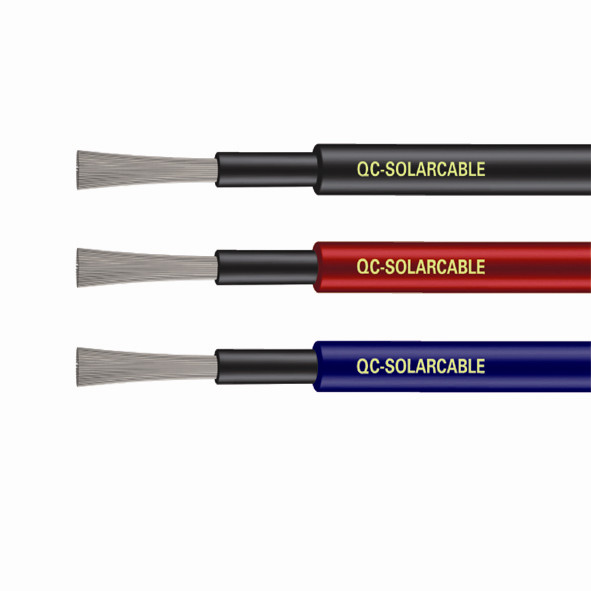Selection Principles and Connection Requirements of Solar Cable
The selection of the solar cable in the system should consider the following factors including the insulation performance of the solar cable, the moisture and sunshine resistance performance of the solar branch cable, the layout ways of the solar cable, the types of the cores including copper core and aluminum core of the solar cable, and the specifications of the solar cable.

The solar cable should have the following characteristics: the solar cable should have good UV resistant performance, and it can resist bad climate environment and bear mechanical impact. The solar cable should have properties of good oxidation resistance and chemical resistance. It should be able to bear large temperature change from -40℃ to 120℃, and the highest temperature can be over 150℃. At the same time, it should have the features of good heat-resistant performance, good cryogenic winding performance, the low temperature bending performance, flame retardant property, low smoke halogen-free performance, etc. It can has longer service life, it is required that the service life of the solar cable should be over 20 years under the working condition of 120 ℃.
The selection of the solar cable has some useful methods. Firstly, the carrying capacity of the solar Panel cable should be checked, and the diameter of the cable can be selected according to the passing current. Secondly, the voltage of the cable is required to be a rated voltage of 600V, and the maximum withstand voltage is 1000V. Thirdly, the solar cable has the weather requirements that it can be used in bad environment, and it should has the features of ozone resistance, UV prevention, acid and alkali resistance, high temperature resistance, cold temperature resistance, no dents resistance, halogen-free performance, flame retardant property, etc. Fourthly, it should be resistant to mechanical tension. Fifthly, the solar cable should pass relevant certification such as the TUV certification.
Different solar cables are selected according to different environments and requirements for the connections of various components in the solar system. Firstly, the connections among components must be processed through UL test, and the connection should have the features of heat resistance of at least 90℃, acid resistance, chemical substance prevention, moisture prevention and exposure resistance in the sun. Secondly, the cable for the connection of the storage battery and the inverter can use the multi-strand soft cables which pass the UL test. Thirdly, indoor wiring in dry environment can use shorter DC connection

